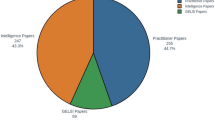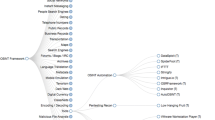Abstract
Social science researchers face risks when studying deviant or criminal behavior, especially when researching violent extremism online. The author emphasizes the importance of acquiring necessary skills to operate safely and anonymously. In the (cyber-)social ecosystem characterized by the centrality of a new dimension of human experience that goes beyond the internet and social media, the Left-Wing Extremism and Violent Left-Wing and Anarchist Extremism (VLWAE) constitute an important challenge for security. The author provides guidelines for conducting online research on Left-Wing Extremism entities using Open Source Intelligence (OSINT), while ensuring digital hygiene and safety, to study their online activities, propaganda, and radicalization strategies. OSINT enables researchers to collect information from various sources, including private and encrypted messaging channels, to understand the organization and mobilization of extremist campaigns. The use of various tools and techniques is presented to highlight the most relevant elements that should be included in a research report on left-wing extremism target. The author also focuses on the importance of technological innovation to support research in this field. Moreover, a strong integration between Artificial Intelligence (AI) and OSINT is revolutionizing online investigations of left-wing extremism and other forms of extremism and terrorism. AI-based technology allows researchers to analyze large amounts of images, videos, and data with the aim for identifying patterns and trends. In the near-future scenario, AI will be used in extremist individuals and entities profiling to anticipate new onlife security threats.
Access this chapter
Tax calculation will be finalised at checkout
Purchases are for personal use only
Similar content being viewed by others
References
Antinori, Arije. 2017. The “‘Swarm Wolf’. Understanding to Prevent the Evolution of Terror”. In Identification of Potential Terrorists and Adversary Planning: Emerging Technologies and New Counter-terror Strategies. IOS Press: Amsterdam
Antinori, Arije. 2020. “Terrorism in the Early ‘Onlife’ Age: From Propaganda to ‘Propulsion’.” In Terrorism and Advanced Technologies in Psychological Warfare: New Risks, New Opportunities to Counter the Terrorist Threat. New York: Nova Science Publishers.
Böhm, Isabelle, Samuel Lolagar. 2021. “Open Source Intelligence.” Cybersecurity Law Review 2, 317–337.
Brougham, Patricia L., Clarissa M. Uttley. 2017. “Risk for Researchers Studying Social Deviance or Criminal Behavior.” Social Sciences 6, no. 4.
Della Porta, Donatella. 1995. Social Movements, Political Violence, and the State. A Comparative Analysis of Italy and Germany. Cambridge: Cambridge University Press
European Observatory on Online Hate. 2020. https://eooh.eu/.
Floridi, Luciano. 2015. The Onlife Manifesto. Being Human in a Hyperconnected Era. Berlin: Springer.
Hine, Christine. 2005. “Virtual Methods and the Sociology of Cyber-Social-Scientific Knowledge.” In Virtual Methods: Issues in Social Research on the Internet, edited by Christine Hine, 1–14. London: Bloomsbury Academic.
Jasko, Katarzyna, Gary LaFree, James A. Piazza, and Michael H. Becker. 2022. “A Comparison of Political Violence by Left-wing, Right-wing and Islamist Extremists in the United States and the World.” PsyArXiv
Jungkunz Sebastian. 2019. “Towards a Measurement of Extreme Left-Wing Attitudes.” German Politics, 28, no. 1, 101–122.
Radicalisation Awareness Network. 2021. Contemporary Violent Leftwing and Anarchist Extremism (VLWAE) in the EU: Analysing Threats and Potential for P/CVE. Luxembourg: Publications Office of the European Union.
US Army. 2012. ATP 2–22.9 Open-Source Intelligence. Department of the Army: Washington
Van Hiel, Alain. 2011. “A Psycho-Political Profile of Party Activists and Left-Wing and Right-Wing Extremists.” European Journal of Political Research, 51, no. 2, 166–203
Vedder, Anton, Robert Wachbroit. 2003. “Reliability of Information on the Internet: Some Distinctions.” Ethics and Information Technology 5, 211–215.
Author information
Authors and Affiliations
Corresponding author
Editor information
Editors and Affiliations
Rights and permissions
Copyright information
© 2023 The Author(s), under exclusive license to Springer Nature Switzerland AG
About this chapter
Cite this chapter
Antinori, A. (2023). Online Research Techniques and Methodologies in the Study of Left-Wing Extremism. In: Zúquete, J.P. (eds) The Palgrave Handbook of Left-Wing Extremism, Volume 1. Palgrave Macmillan, Cham. https://doi.org/10.1007/978-3-031-30897-0_9
Download citation
DOI: https://doi.org/10.1007/978-3-031-30897-0_9
Published:
Publisher Name: Palgrave Macmillan, Cham
Print ISBN: 978-3-031-30896-3
Online ISBN: 978-3-031-30897-0
eBook Packages: Political Science and International StudiesPolitical Science and International Studies (R0)




